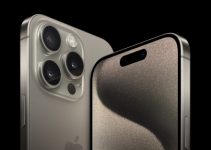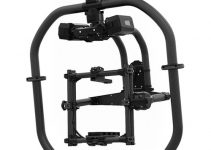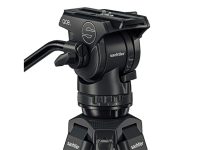The iPhone 12 Pro Max can go where your Pocket 6K can not, your pocket. But does the image quality of a mobile device live up to one of the most popular and affordable raw digital cinematography cameras on the market? The short answer is yes, and the long answer is yes (depending on who is looking at it).
Using a little bit of Blackmagic’s own sorcery to match them in post, Michael Tobin has pitted these two incredible devices against one another, side-by-side, to see if you can see the difference or if the premiere Apple device has finally once and for all taken the lead as a filmmaking tool. Check the link below, and let us know which one you think wins.
To the trained eye, spotting the difference between cellphone footage and footage shot with a professional digital cinema camera is fairly easy.
The telltale signs of mobile footage stick out like a sore thumb; noise reduction artifacts, compression artifacts, focus depth, and dynamic range plague the video capturing abilities of pretty much every phone.
But Apple has been chipping away at that laundry list of bad video issues for sometime now, and with the introduction of H.265 compression, 10-bit color, and HDR video on the iPhone 12 Pro Max, the 4K camera that actually can fit in your pocket, things have never looked better.
Let’s have a look at the key video features of both cameras, breakdown the method used to match and compare them, and see what makes their differences stand out.
iPhone 12 Pro Max Key Video Features
- 12MP, 1/3.6” sensor, ƒ/2.2 aperture
- HDR video recording with Dolby Vision up to 60 fps
- 4K video recording at 24 fps, 30 fps, or 60 fps
- Optical image stabilization for video (Wide and Telephoto)
- Extended dynamic range for video up to 60 fps
- Continuous autofocus video
- Video formats recorded: HEVC and H.264
- Price: $1,099 – $1,399 (128GB – 512GB)
Blackmagic Pocket Cinema Camera 6K Key Features
- Active Canon EF/EF-S Mount
- Super 35-Sized HDR Sensor
- Record 6K 6144 x 3456 up to 50 fps
- Dual Native 400 & 3200 ISO to 25,600
- CFast 2.0 & SD/UHS-II Card Slots
- External Recording via USB Type-C
- 13-Stop Dynamic Range, 3D LUT Support
- Price: $1,999
Footage Setup
Placing the Pocket 6K footage on the left and the iPhone 12 Pro Max footage on the right, Michael color corrected and matched the iPhone HDR footage to the Pocket 6k by using the RGB Histograms and the built-in settings in Resolve.
Straight out of the camera, you can clearly see the massive difference between BRAW from the Pocket 6k and the Dolby Vision HDR footage from the Pro Max.
The P6K footage is very flat, log image and the Pro Max is also less saturated but this is not log footage, it is Rec.2100 HDR and it has to be transformed to Rec.709.
Using a Color Space Transform node, the Pocket 6K has been adjusted to be properly displayed in the Rec.709 timeline by setting the Input Color Space and Input Gamma to Blackmagic Design Wide Gamut Gen 4, and using a second node to match to the Histogram of the iPhone.
On the right side, the iPhone was transformed to the Rec.709 timeline using a Color Space Transform node with Input Color Space set to Rec.2100, and Input Gamma set to Gamma 2.4.
Further adjustments were made to attempt to match the color and dynamic range as well as possible with the Pocket 6K, and those tweaks carry on from shot to shot throughout this presentation.
Footage Analysis
Right off the bat, it’s absolutely astonishing how close the iPhone 12 Pro Max matches with the Pocket 6k. The Pocket 6k has a naturally flatter, more classically cinematic look but there is something about the contrast and the saturation of the iPhone that still looks strikingly phenomenal (knowing it is a phone).
The dynamic range of the iPhone 12 Pro Max has been independently tested and will allow for a potential of 14-stops of dynamic range in DNG. The Pocket 6K is advertised as having a dynamic range of 13-stops, but real world test have shown that to be closer to 11+ stops or so.
The similarities in the dynamic range of both cameras are very apparent in the footage inside the garage, where you can see details in the darkest parts of the images all the way into the bright sky. Both cameras appear to be clipped in the histogram, but the P6K probably has just a touch more room in those extreme highlights.
With so much more information being collected by the P6K in raw, the potential to adjust the footage to match the iPhone 12 Pro Max is endless. With the iPhone there is some wiggle room, but with the limitations of the internal codec you’re relatively limited and should capture the best shot possible in-camera.
You can see from the staircase example that the iPhone footage is very appealing, the sky is more saturated and it might look like a better image. It wouldn’t take too much to get a similar look from the Pocket 6K.
Inspecting the shot further, you can see there is a fair amount of clipping going on in the highs and it doesn’t have the more pleasing subtle roll-off that is present in the footage from the P6K.
Commercial cinematography relies on high saturation and high contrast to attract our attention, whereas narrative cinematography has a flatter more even look.
Neither one of these looks is right or wrong, but the images from the iPhone 12 Pro Max lean more heavily toward a commercial look, and the P6K has more of a narrative look right off the truck.
Matching the P6K to the iPhone’s contrast and saturation is easy but you don’t have that leeway on the iPhone to match the P6K.
In professional cinematography, sensor size is everything. We’ve grown accustomed to seeing images that were captured with a film plane equivalent to Super 16, or Super 35 for the entire history of theatrically released movies, and more recently Full Frame images have replaced the epic 70mm print from the golden age of Hollywood.
So, when we see footage where there is no depth of field, little or no bokeh, everything is sharp, and everything is in focus, it is a dead giveaway that it came from a phone.
However, the focus depth is much less apparent in wide shots and landscape shots, and it might just blow right past you if it were cut into a finished piece.
Image detail and denoising algorithms are also clear indications of cellphone footage, and the iPhone 12 Pro Max still has issues with clarity and noise despite all of its advancements.
We can clearly see from this example how much detail is present in the chairs on the left of the frame from the P6K, and how muddy those file’s lines appear in the 12 Pro Max. This is a combination of low bitrates and noise reduction that are implemented in-camera on the iPhone.
On the iPhone screen the difference might not be apparent, but playing back in full screen you’ll definitely see all that unpleasant noise dancing around on your image.
Final Thoughts
If you’re reading this, you’re probably a seasoned professional filmmaker, an amateur looking to break into the business, or a student eager to learn.
You can see the difference between these cameras because you know what is and isn’t possible when you’re filming with a professional camera, but to 99.9% of the rest of the world, there is very little difference between these two cameras.
Even more, they probably wouldn’t care or notice if shots were intercut between the two on a video or if the entire movie was filmed using the Filmic Pro app.
There is definitely a place for the iPhone 12 Pro/Pro Max on certain productions, and it may be the only camera you need for a blog anymore in 2020. Will the iPhone ever replace a dedicated professional camera? I believe it will, eventually.
Once the internal storage is large enough, fast enough, and the processor can handle all of the data, we’ll start to see phone footage that is out of this world. Luckily for right now, the iPhone 12 Pro Max doesn’t hold a candle to the Pocket 6K, but since it does actually fit inside of your pocket we’re sure to see a lot more people using it to make movies.
[source: Michael Tobin]
Order Links:
- Blackmagic Design Pocket Cinema Camera 6K (B&H, Amazon)
- Apple iPhone 12 Pro Max (128GB, Graphite) (Amazon)
Disclaimer: As an Amazon Associate partner and participant in B&H and Adorama Affiliate programmes, we earn a small comission from each purchase made through the affiliate links listed above at no additional cost to you.




